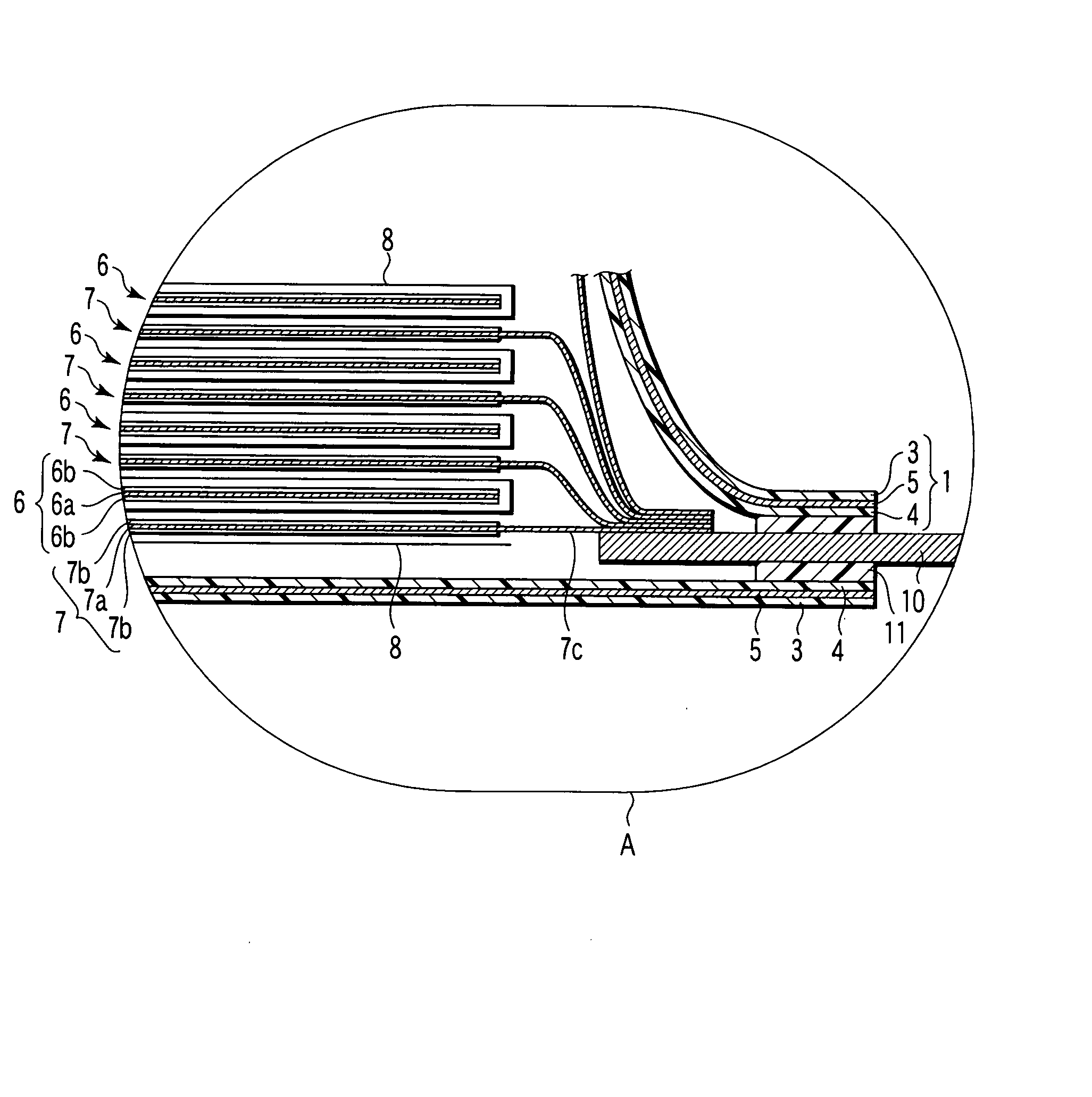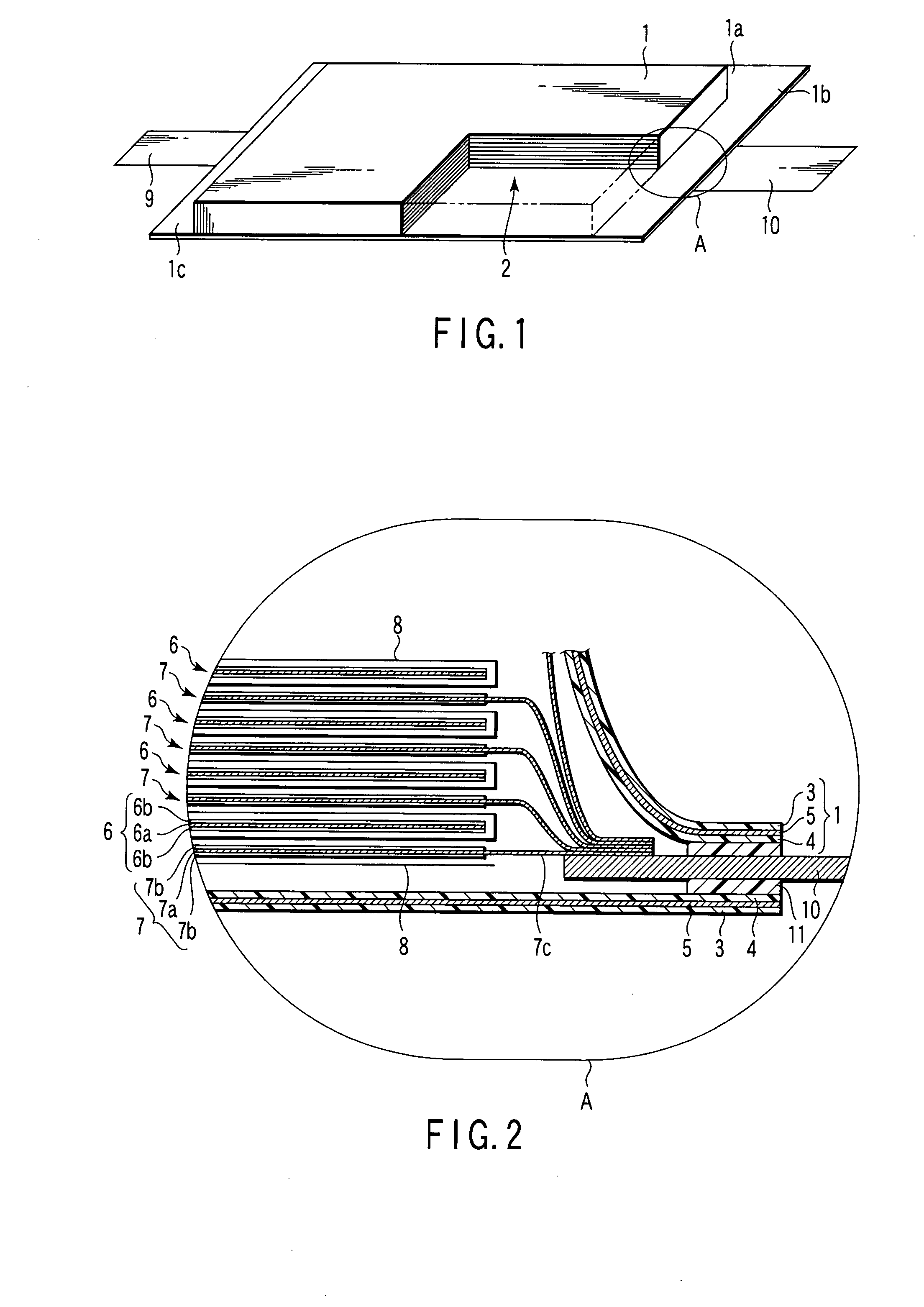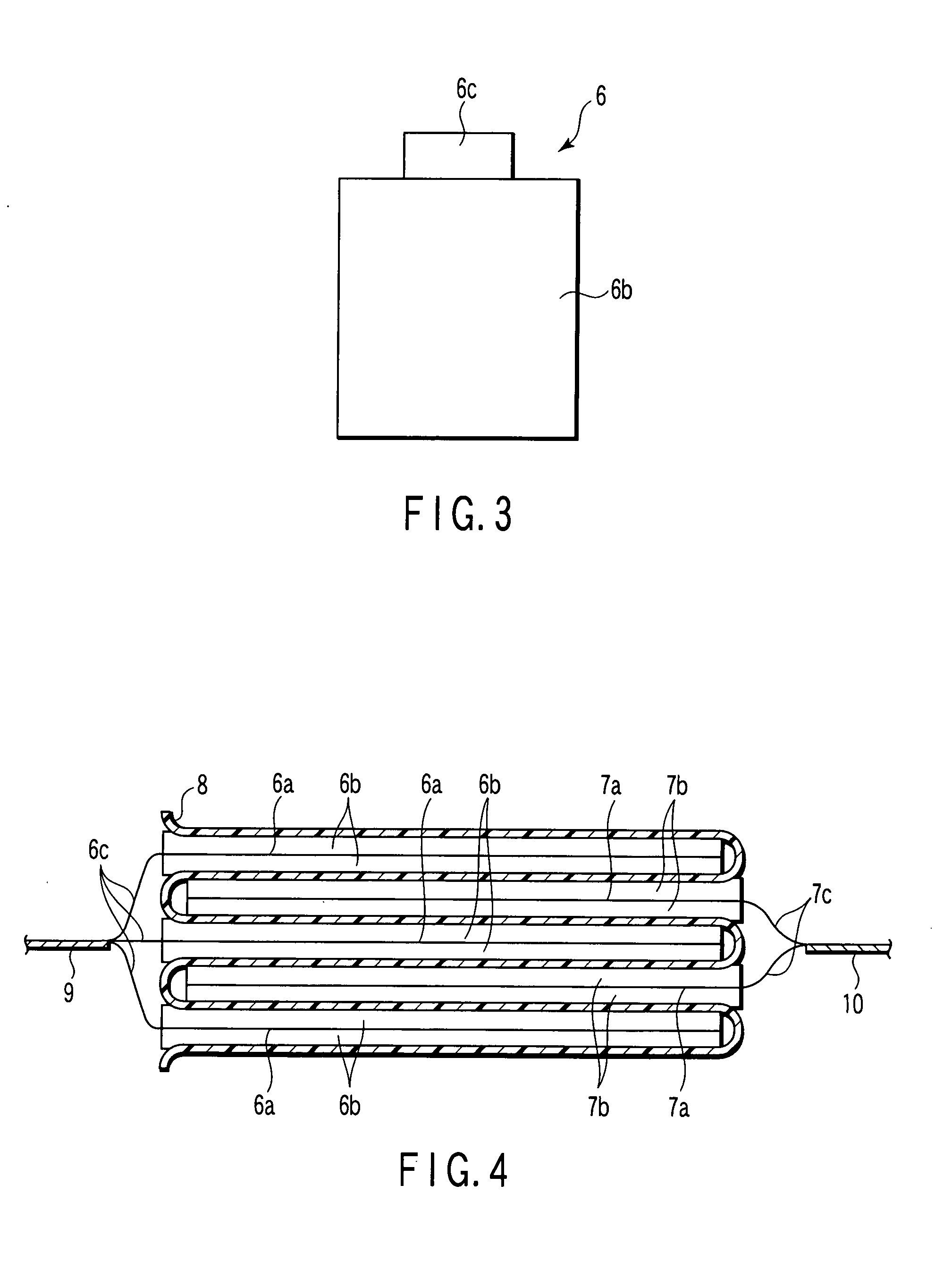Nonaqueous electrolyte battery, battery pack and vehicle
a technology of electrolyte batteries and battery packs, applied in the direction of secondary cell servicing/maintenance, cell components, sustainable manufacturing/processing, etc., can solve the problems of increased heat generation of batteries, deterioration of large-current cycle performance, and inability to solv
- Summary
- Abstract
- Description
- Claims
- Application Information
AI Technical Summary
Benefits of technology
Problems solved by technology
Method used
Image
Examples
first embodiment
[0032] According to an embodiment, a nonaqueous electrolyte battery excellent in large-current performance can be obtained. Studies have been made to reduce cycle deterioration during a cycle operation under a large current, and as a result, the following result has been found. Specifically, it has been found that if the following equation (1) is satisfied when a nonaqueous electrolyte battery comprises a laminate-type electrode group produced using a separator folded in a zigzag form, the large-current cycle performance is improved without impairing the output performance under a large current by making the Gurley value of the outermost layer larger than that of an inner layer in the separator folded in a zigzag form.
3×10−5≦(X / Y)≦1.5×10−3 (1)
wherein X is a rated resistance [mΩ] of the nonaqueous electrolyte battery and Y is a rated capacity [mAh] of the nonaqueous electrolyte battery.
[0033] A nonaqueous electrolyte battery generates heat when passing a large current. The accu...
second embodiment
[0102] A battery pack according to a second embodiment has plural nonaqueous electrolyte batteries according to the first embodiment. It is preferable that the nonaqueous electrolyte battery according to the first embodiment be used as a unit cell and the unit cells be electrically connected in series or in parallel to constitute a battery module.
[0103] The nonaqueous electrolyte battery according to the first embodiment is suitable for the assembling of the battery module and the battery pack according to the second embodiment is superior in large-current performance. Explanations will be furnished as to this.
[0104] Because the nonaqueous electrolyte battery according to the first embodiment can supress the generation of heat under a large current, it is possible to remarkably reduce an individual difference in battery capacity and impedance. As a result, fluctuation of the voltage of the unit cell at a fully charged state due to individual difference of the capacity can be reduc...
third embodiment
[0116] A vehicle according to a third embodiment comprises the battery pack according to the second embodiment. Examples of the vehicle referred here include two- to four-wheel hybrid electric cars, two- to four-wheel electric cars and assist bicycles.
[0117] FIGS. 10 to 12 show various type of hybrid vehicles in which an internal combustion engine and a motor driven by a battery module system are used in combination as the power source for the driving. For driving the vehicle, required is the power source exhibiting a wide range of the rotation speed and the torque depending on the running conditions of the vehicle. Since the torque and the rotation speed exhibiting an ideal energy efficiency are limited in the internal combustion engine, the energy efficiency is lowered under the driving conditions other than the limited torque and the rotation speed. Since the hybrid vehicle includes the internal combustion engine and the electric motor, it is possible to improve the energy effic...
PUM
| Property | Measurement | Unit |
|---|---|---|
| average crystal grain size | aaaaa | aaaaa |
| Gurley value | aaaaa | aaaaa |
| density | aaaaa | aaaaa |
Abstract
Description
Claims
Application Information
 Login to View More
Login to View More - R&D
- Intellectual Property
- Life Sciences
- Materials
- Tech Scout
- Unparalleled Data Quality
- Higher Quality Content
- 60% Fewer Hallucinations
Browse by: Latest US Patents, China's latest patents, Technical Efficacy Thesaurus, Application Domain, Technology Topic, Popular Technical Reports.
© 2025 PatSnap. All rights reserved.Legal|Privacy policy|Modern Slavery Act Transparency Statement|Sitemap|About US| Contact US: help@patsnap.com



